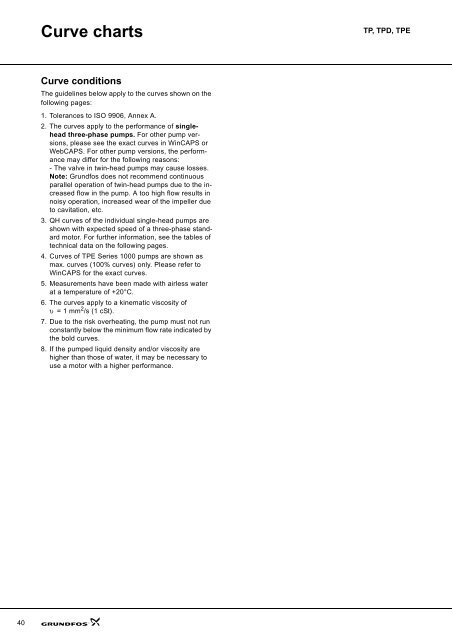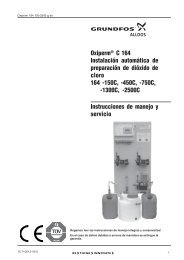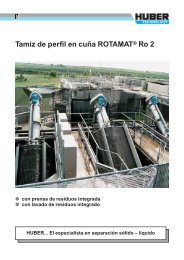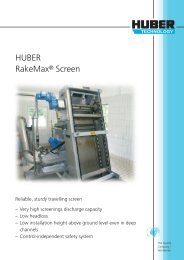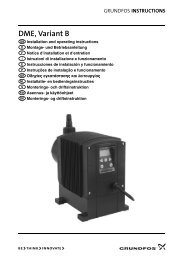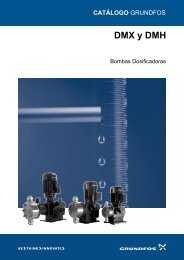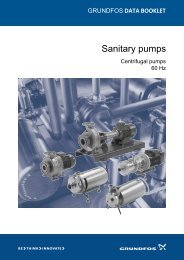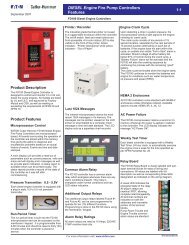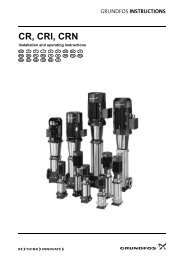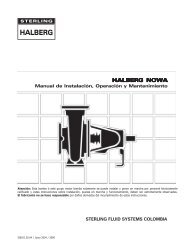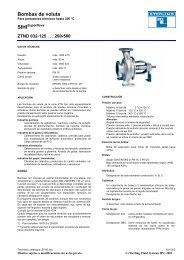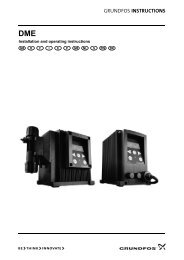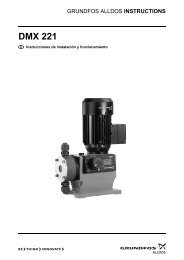You also want an ePaper? Increase the reach of your titles
YUMPU automatically turns print PDFs into web optimized ePapers that Google loves.
Curve charts<br />
<strong>TP</strong>, <strong>TP</strong>D, <strong>TP</strong>E<br />
Curve conditions<br />
The guidelines below apply to the curves shown on the<br />
following pages:<br />
1. Tolerances to ISO 9906, Annex A.<br />
2. The curves apply to the performance of singlehead<br />
three-phase pumps. For other pump versions,<br />
please see the exact curves in WinCAPS or<br />
WebCAPS. For other pump versions, the performance<br />
may differ for the following reasons:<br />
- The valve in twin-head pumps may cause losses.<br />
Note: Grundfos does not recommend continuous<br />
parallel operation of twin-head pumps due to the increased<br />
flow in the pump. A too high flow results in<br />
noisy operation, increased wear of the impeller due<br />
to cavitation, etc.<br />
3. QH curves of the individual single-head pumps are<br />
shown with expected speed of a three-phase standard<br />
motor. For further information, see the tables of<br />
technical data on the following pages.<br />
4. Curves of <strong>TP</strong>E Series 1000 pumps are shown as<br />
max. curves (100% curves) only. Please refer to<br />
WinCAPS for the exact curves.<br />
5. Measurements have been made with airless water<br />
at a temperature of +20°C.<br />
6. The curves apply to a kinematic viscosity of<br />
υ =1mm 2 /s (1 cSt).<br />
7. Due to the risk overheating, the pump must not run<br />
constantly below the minimum flow rate indicated by<br />
the bold curves.<br />
8. If the pumped liquid density and/or viscosity are<br />
higher than those of water, it may be necessary to<br />
use a motor with a higher performance.<br />
40


